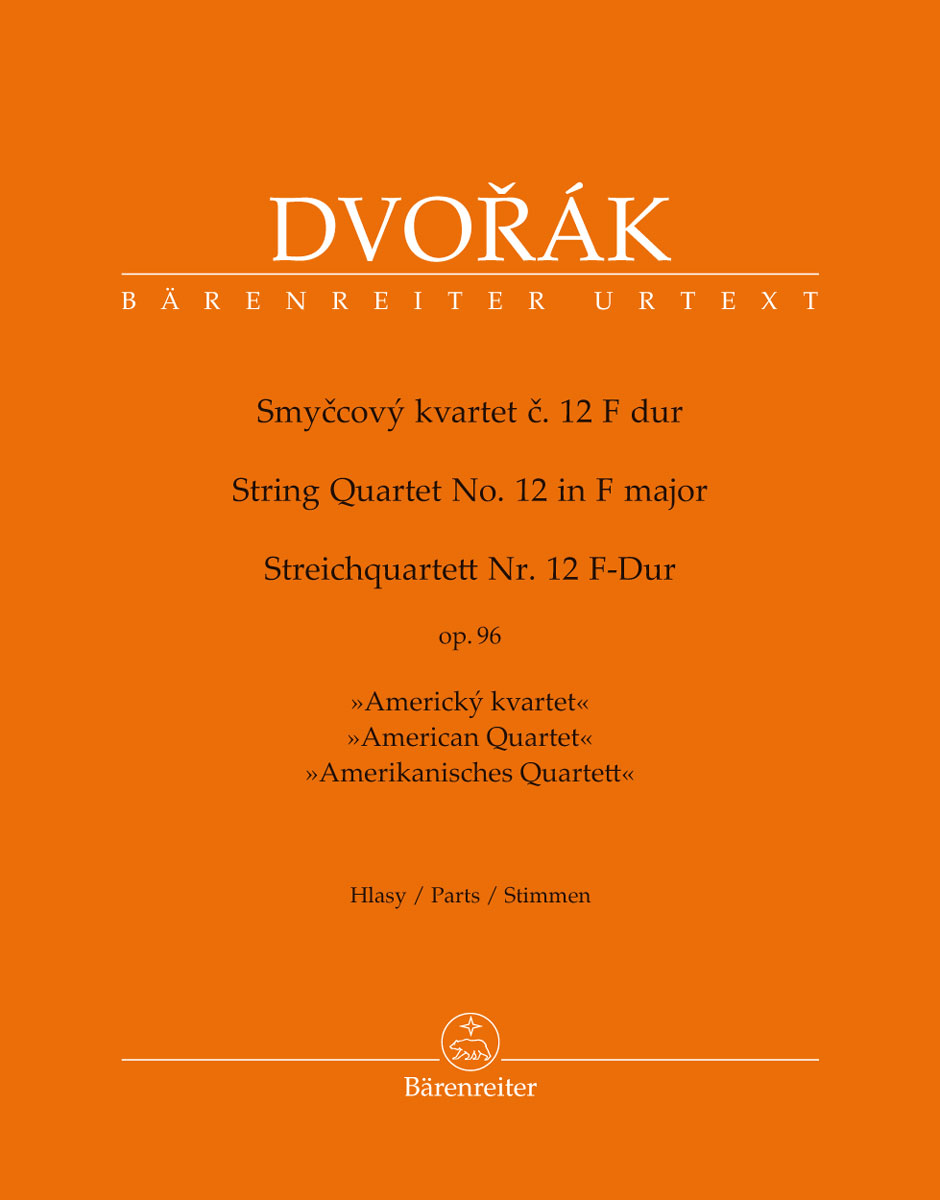Nuotteja ja kirjoja kaupassa 58 156 kappaletta ● Erikoistuotteet tilauksesta
Open Mon-Fri 11-18 (Closed 23.12.2025-1.1.2026) | tel. +358 20 7070 443 | Musiikkitalo, Mannerheimintie 13a B, 00100 Helsinki |ostinato@ostinato.fi
Dvorak
Quartet F op 96 "American" (parts)
Price: 19,00
€
In stock
- New Urtext Edition of the “American” Quartet
- Standard notation used in the violoncello part
- Detailed Foreword (Ger/Cz/Eng) and Critical Commentary (Eng) by the editor
Dvorák composed his twelfth string quartet in F major op. 96, known as the “American” Quartet, in just twelve days during his summer vacation in Spillville, Iowa in June 1893. This immensely uplifting quartet has become one of the composer’s most popular works because of its immediate musical appeal.
The work was issued by the publisher Simrock in Berlin in 1894; Johannes Brahms had read the corrections, but the engraver copy (“Stichvorlage”) has unfortunately not survived. Dvorák himself was in America and not involved in the preparation of the first edition. The editor therefore draws on the autograph as well as the score and parts of the first print. The assessment of differing readings proved particularly challenging.
In accordance with current practice, the violoncello part of this edition refrains from using the false treble clef which raises the music an octave higher. Instead, the tenor clef is used.
- Standard notation used in the violoncello part
- Detailed Foreword (Ger/Cz/Eng) and Critical Commentary (Eng) by the editor
Dvorák composed his twelfth string quartet in F major op. 96, known as the “American” Quartet, in just twelve days during his summer vacation in Spillville, Iowa in June 1893. This immensely uplifting quartet has become one of the composer’s most popular works because of its immediate musical appeal.
The work was issued by the publisher Simrock in Berlin in 1894; Johannes Brahms had read the corrections, but the engraver copy (“Stichvorlage”) has unfortunately not survived. Dvorák himself was in America and not involved in the preparation of the first edition. The editor therefore draws on the autograph as well as the score and parts of the first print. The assessment of differing readings proved particularly challenging.
In accordance with current practice, the violoncello part of this edition refrains from using the false treble clef which raises the music an octave higher. Instead, the tenor clef is used.
